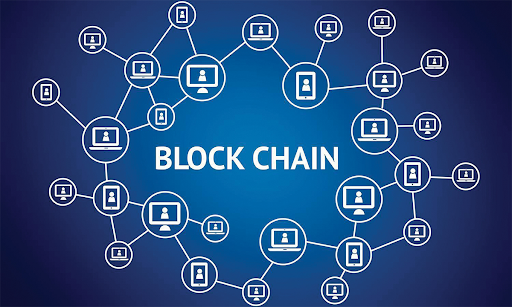In finance, trust and safety are everything. With the rise of digital money and decentralized platforms, more financial companies now use blockchain. But using blockchain also brings new risks. Weak spots in code or smart contracts can lead to big losses. A small mistake in a blockchain system can cost millions.
The solution is simple: strong blockchain application testing. This means checking every part of the system, from code to user experience. When testing is done right, it can stop bugs before they become problems. It protects users and builds trust.
Blockchain testing helps financial systems run safely and smoothly. It ensures that digital transactions are secure and that apps do what they promise.
This blog discovers why blockchain application testing matters so much for finance. You will explore how it supports security, quality, and faster releases. You’ll also read how it fits into modern development methods and tools.
Custom protocols and DApps to ensure safe decentralized financial applications
Decentralized applications (DApps) and custom blockchain protocols power modern financial services. But they come with complex tech. Without proper blockchain application testing, these systems can break easily or expose user data.
Many financial platforms use custom blockchain code to support features like cross-platform trading, automatic settlements, and digital wallets. Testing ensures these systems are safe and do what users expect. When large investors rely on these Apps, even small bugs can be dangerous.
Key testing points:
- Smart contract testing: Verifies that contracts do what they’re supposed to. One wrong line of code can freeze or lose assets.
- Private key management: Tests how keys are stored and accessed to prevent hacking.
- Interoperability testing: Ensures DApps run smoothly across platforms.
- Cross-chain feature validation: Verifies that trading pairs and liquidity work without bugs.
- Security audits: Find hidden weaknesses in custom code.
Risk-based testing approach to prevent major failures in financial apps
A risk-based testing approach puts the focus on the riskiest parts of a blockchain system. In finance, this means checking anything that deals with transactions, user identity, and rules like Know Your Customer (KYC).They simulate real-world usage to see how the app behaves under pressure. This helps prevent crashes and leaks.
This method fits well with blockchain in software testing. It supports both speed and accuracy.
Key testing points:
- End-to-end testing: Follows the user journey from start to finish.
- Consensus mechanism checks: Verifies how the network agrees on data.
- Data sync testing: Ensures all nodes get the same information.
- Smart contract behavior: Tests if the contract logic is safe and correct.
- Validator node testing: Makes sure these key parts of the system perform well.
Test automation and regression testing to speed up secure releases
Fast delivery is key in finance. But speed can’t come at the cost of security. That’s where test automation and regression testing help. These methods run quick tests on old and new code to make sure everything still works.
Blockchain application testing with automation reduces time and errors. Developers get fast feedback. Bugs are caught early. And updates go live faster.
Key testing points:
- API test automation: Checks how different systems talk to each other.
- Regression testing suite: Reruns tests to find bugs after updates.
- Smart contract test libraries: Run contract behavior checks automatically.
- Node update validation: Makes sure network updates don’t cause failure.
- CI/CD pipeline integration: Connects testing with development for speed.
Comprehensive QA and quality engineering services to build strong blockchain systems for finance
Quality assurance (QA) and quality engineering (QE) keep blockchain apps stable. In finance, where each error can be costly, full QA is not optional—it’s a must.
Blockchain application testing includes more than bug checks. It covers the full user experience, system behavior, and technical setup. It also brings blockchain testing services together with expert teams who understand both blockchain and finance.
Key testing points:
- Functional QA: Checks that the system does what it should.
- Non-functional testing: Looks at speed, reliability, and security.
- Compliance testing: Verifies rules like the General Data Protection Regulation and financial laws.
- Performance monitoring: Tracks how the app works under load.
- Specialized blockchain QA: Adds experts who know smart contracts and networks.
Continuous testing and DevSecOps to secure blockchain systems at every stage
DevSecOps (Development, Security, and Operations) is a process to embed security into the software from the starting of development stage. When paired with continuous testing, it creates safer systems.
In blockchain application testing, this means checking security and quality all the time—not just at the end. This approach catches problems early and keeps things running safely. Blockchain in software testing needs this kind of constant attention. With financial data at risk, there’s no room for last-minute fixes.
Key testing points:
- Early-stage testing: Find bugs during design and coding.
- Security-first development: Tests are written with safety goals.
- Automated security tests: Scan for known issues often.
- Blockchain-specific checks: Looks for issues in consensus, contracts, and data.
- Monitoring in production: Watches live systems for signs of failure.
Advanced tools and accelerators to make blockchain testing faster and smarter
Blockchain apps grow fast. Tools and accelerators help testers keep up. These include artificial intelligence (AI), machine learning, and pre-built test kits.
Using these tools in blockchain application testing saves time and finds issues that manual testing may miss. They also cut costs and speed up delivery.
Blockchain testing services often include these tools to boost accuracy and coverage. It’s part of making blockchain in software testing more efficient.
Key testing points:
- AI-based bug detection: Spots patterns humans might miss.
- Performance simulation tools: Test how apps behave under real-world loads.
- Test accelerators Pre-made scripts for common tests.
- Blockchain explorer integration: Checks live data and history.
- Monitoring dashboards: Show test results in real time.
Final thoughts
Blockchain application testing protects money, users, and data. From smart contracts to automated tests, each part of testing plays a role in keeping systems safe and fast.
Blockchain in software testing works with custom DApps, risk-based methods, automation, QA, DevSecOps, and smart tools. Together, these build trust in financial platforms.
For real results, financial companies need strong blockchain testing services. And that’s where Qualitest comes in. It offers blockchain application testing tailored for finance. These testing services are built for secure financial transactions. With deep experience in decentralized finance, it delivers testing that targets:
- Smart contract flaws
- Consensus model weaknesses
- API data flow errors
- Security gaps across nodes
Want safer, faster blockchain apps? Choose Qualitest for blockchain application testing. It will help you secure financial systems and boost performance.



